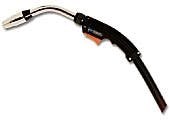Equipment/Software/Literature
New tool for computational fluid dynamics use
Newly released TGrid 3.4 is an unstructured meshing tool for computational fluid dynamics (CFD) model building.
CFD analysis requires that a geometrical representation of the problem be constructed and covered with a computational mesh, or grid. TGrid is one of several tools this firm provides to the users of its CFD software to streamline and take the guesswork out of the task of building a computational mesh.
An unstructured mesh is made up of elements such as tetrahedra pyramids and wedges, in addition to the traditional hexahedral (brick) elements, for greater flexibility, particularly in the case of complicated shapes. One feature of TGrid 3.4 is the ability to grow prism layers along nonplanar boundaries, which can help reduce design time, the firm says.
The tool has the ability to automatically refine surface meshes that are in close proximity; this solves a common problem of unstructured meshing in complicated geometries. New commands in TGrid 3.4 aid in defining resolution, giving the engineer more control over the quality of surface meshes.
Users can intersect two overlapping surface meshes to properly connect them with a touch of a button, with TGrid automatically subdividing faces and adjusting nodes as needed.
Source: Fluent Inc., 10 Cavendish Court, Centerra Resource Park, Lebanon, NH 03766-1442.
New support system for E&P operations
OpenSpirit V2.1, a vendor-neutral, platform-independent application framework, adds support for Landmark OpenWorks 98.5 and GeoQuest GeoFrame 3.8 servers, support for basic earth models, horizons, and horizon properties, improved event gateway functionality, and support for Microsoft Windows NT/2000 C++ clients. In addition, release version 2.1 includes system performance improvements and enhanced deployment tools.
It allows E&P companies to select and integrate best-in-class applications, independent of their chosen data management solution.
Users will be able to integrate a set of applications across a range of computer platforms, the company says.
Source: OpenSpirit Corp., Suite 700, 1155 Dairy Ashford, Houston, TX 77079.
Update of welding gun design makes it run cooler
An update of the design of the APX Series MIG guns has made them cooler running.
The new design improves several features of the lightweight, air-cooled, and semiautomatic guns. Nickel-plated, screw-on nozzles help reduce spatter accumulation and reduce heat conduction to the gun handle. An exclusive neck design with plated inner and outer tubes helps reduce heat buildup and extend consumable life.
Guns are available for any application in a range of 300-600 amp. Features include patented Quik Tip contact tips that can be affixed or removed with a simple twist, steel monocoil power cables for feedability, curved ergonomic handles of thermoplastic nylon, and 360° swivel necks for performing out-of-position welding without changing necks or guns. They are suited for heavy-duty oil field applications.
Source: OXO Welding Equipment Co., 2601 Lockheed Ave., Watertown, SD 57201.
Wireline formation testing system
The reservoir description tool (RDT) now offered to the industry's drilling and exploration segment incorporates a pumpout design with a digital control feedback system, allowing the tool to continuously sample and monitor formation fluids. It enables the advanced wireline formation testing system to provide operators with accurate, extensive reservoir information.
The RDT makes instantaneous changes in pumpout flow rates to maintain a prescribed rate, helping improve formation fluid sampling and pressure testing. The tool also combines a pumping system motor with a hydraulic system that allows it to pump invaded fluids and formation fluids 50% faster than other wireline test tools, the company says.
By monitoring fluid and formation properties in real time, operators can determine the optimum point to obtain the highest sample quality possible, especially where zones are tested over a wide range of overbalance pressures in a single trip. The RDT also has the ability to provide extended pressure range sampling through the use of two flow control pumpout sections.
The tool also has the ability to monitor up to five fluid and formation properties during testing that includes resistivity, bubble point, compressibility, horizontal and vertical permeability, and anisotropy. Simultaneously deployed, closely spaced dual probes were also engineered to increase reliability through redundancy and to allow for advanced pressure-testing techniques. For example, formation anisotropy (kv/kh) can be determined through interference testing between the two probes, while additional formation diffusive properties can be calculated using new pressure-pulsing techniques between each probe.
The RDT's Zero Shock pressure-volume-temperature (PVT) sampling method can eliminate pressure transients during pumping and sampling, as well as perform closed-chamber PVT testing for the bubble point of the sampled fluid. The tester can be combined with existing open hole logging tools, and tool sections are interchangeable, which permits a complete wireline tool string to be configured to meet particular open hole formation evaluation and testing needs in a single trip into the well.
Source: Halliburton Energy Services, c/o Halliburton Co., Box 3, Houston, TX 77001-0003.

